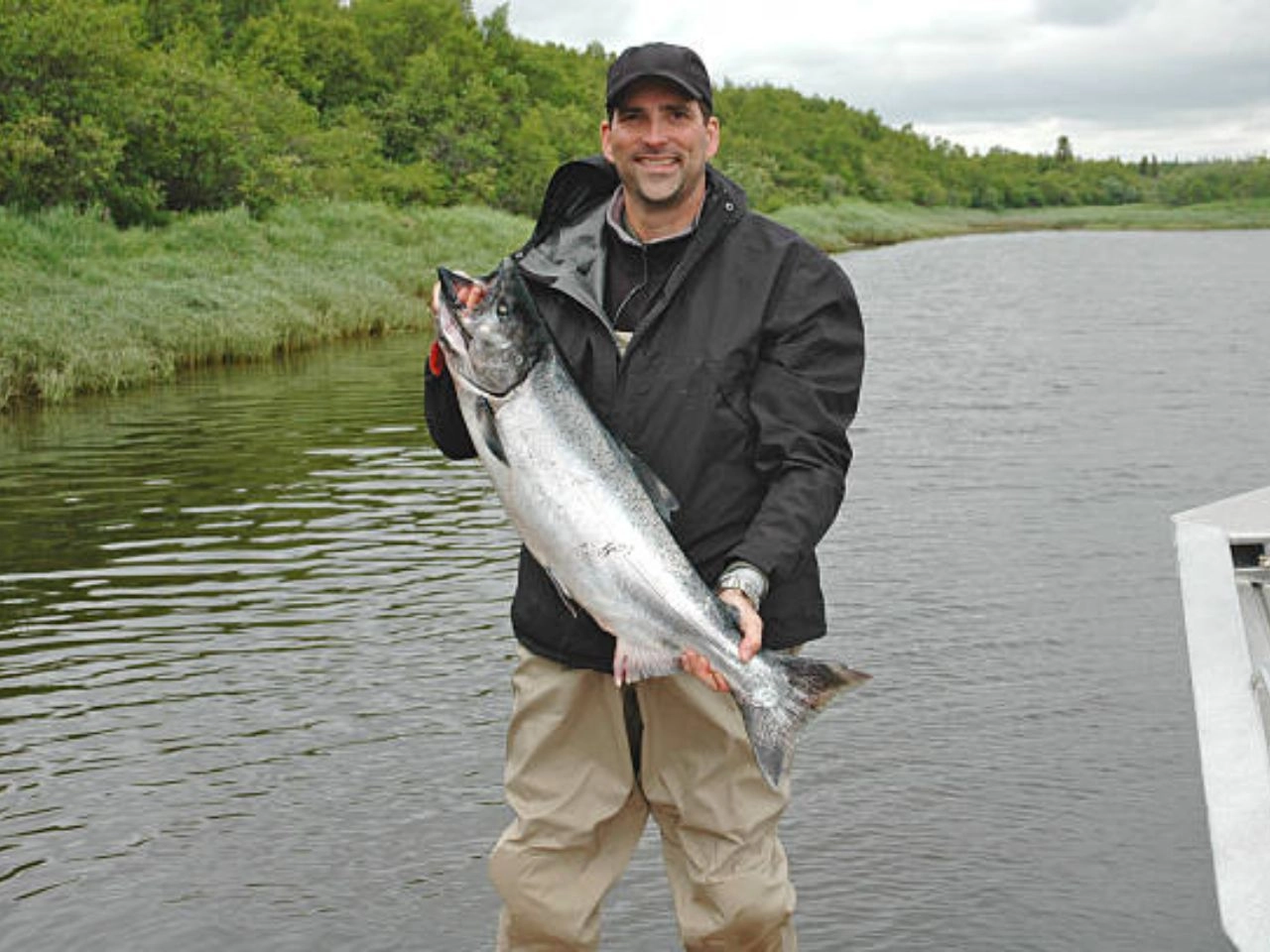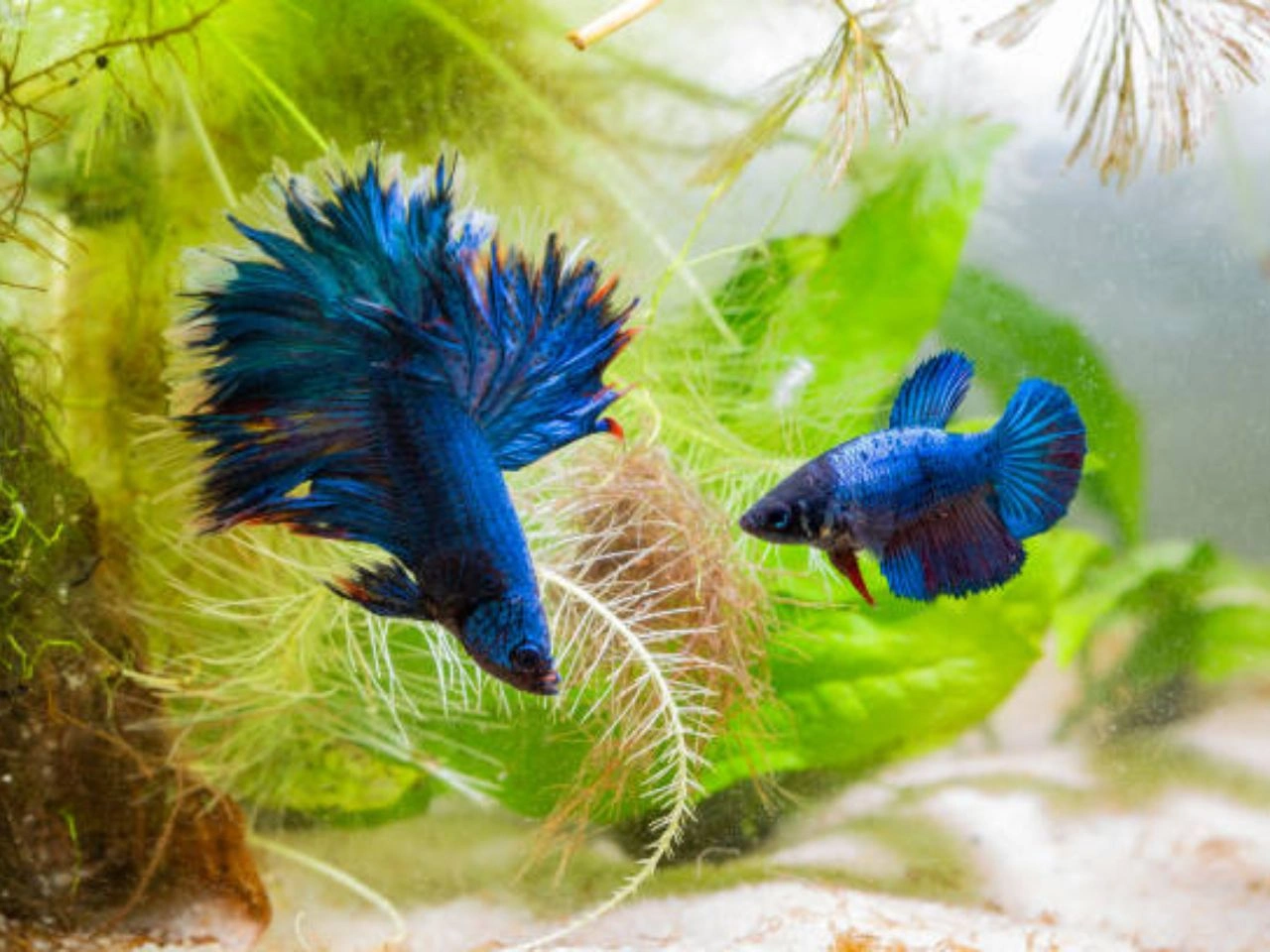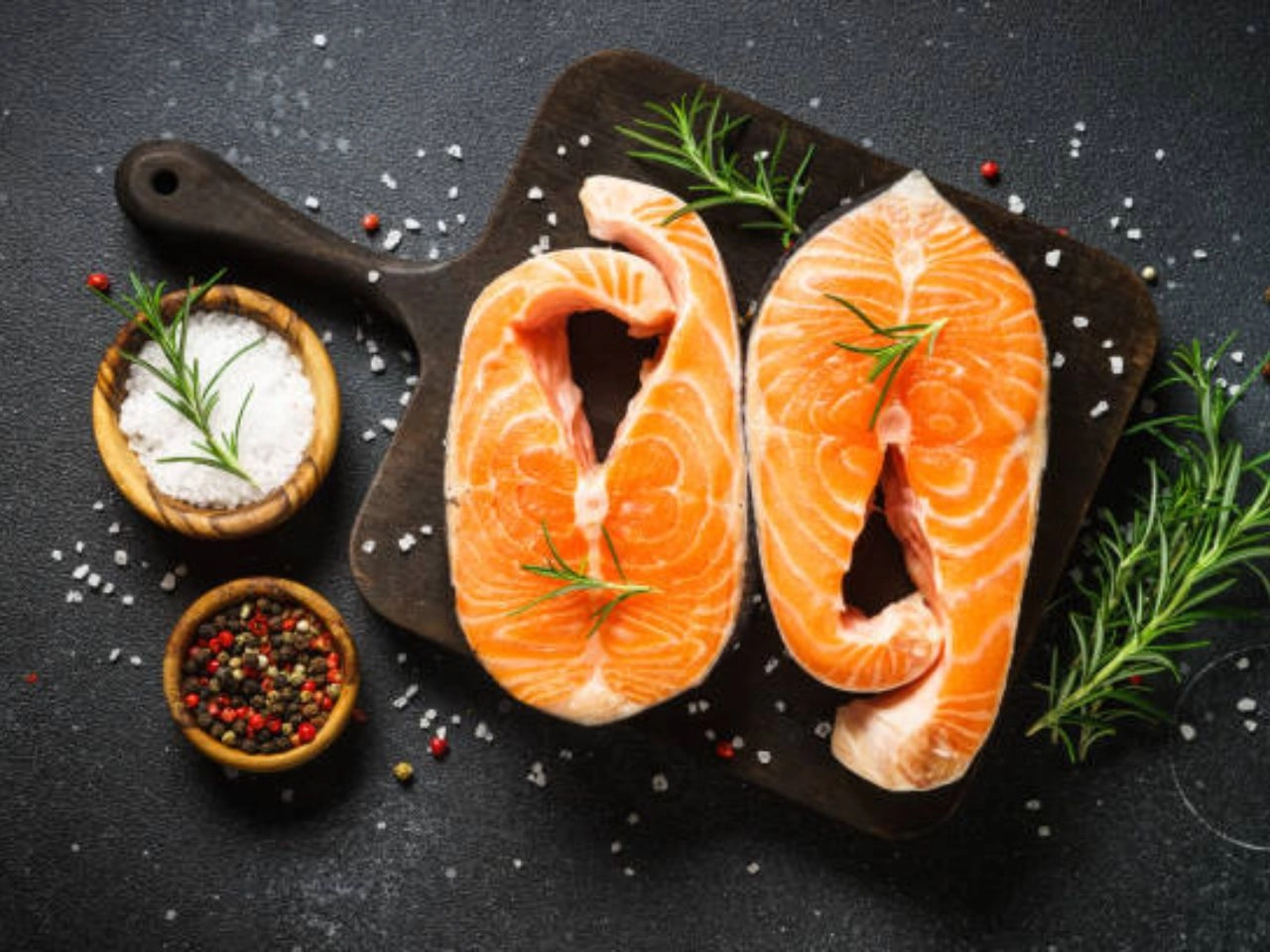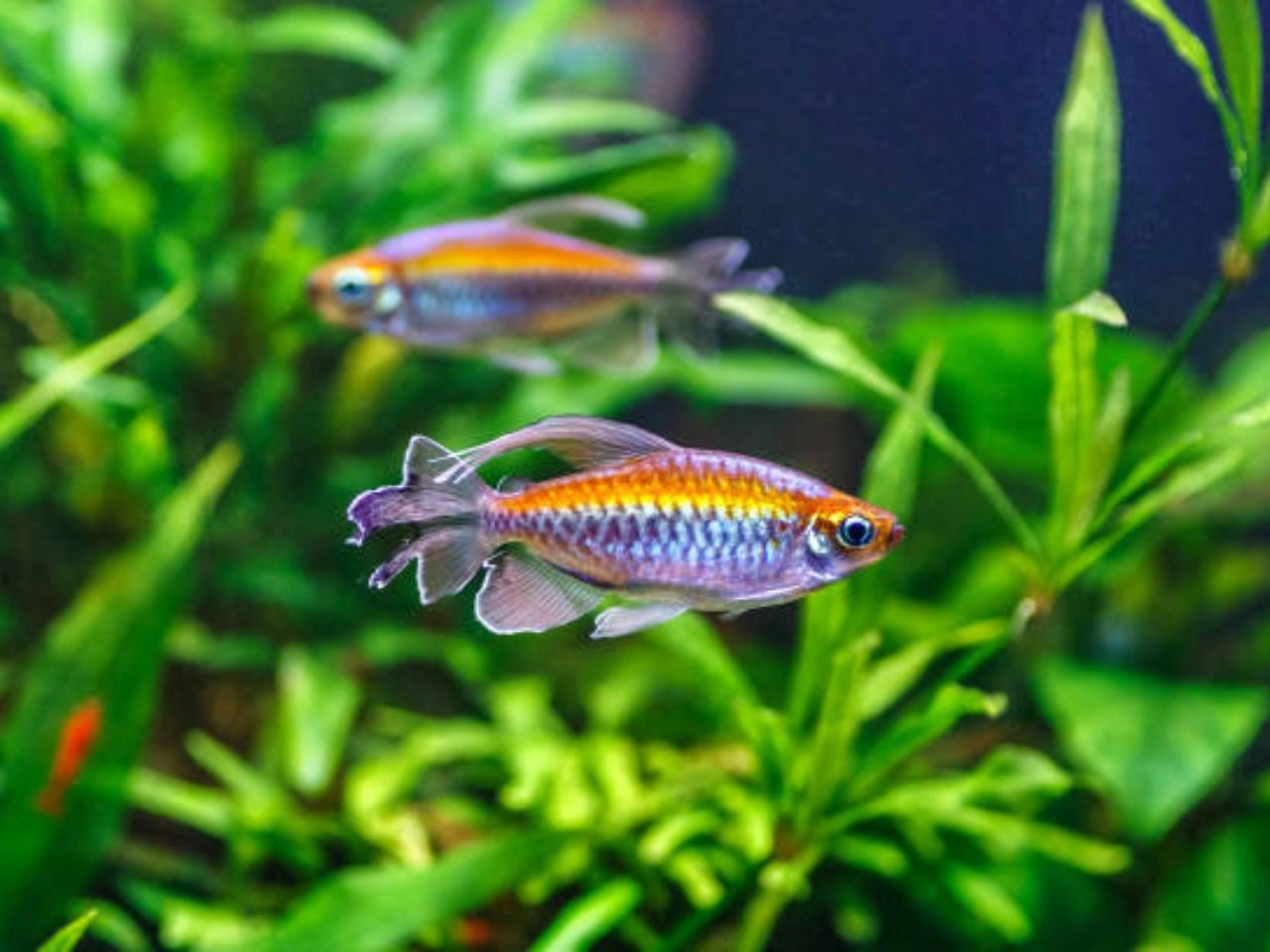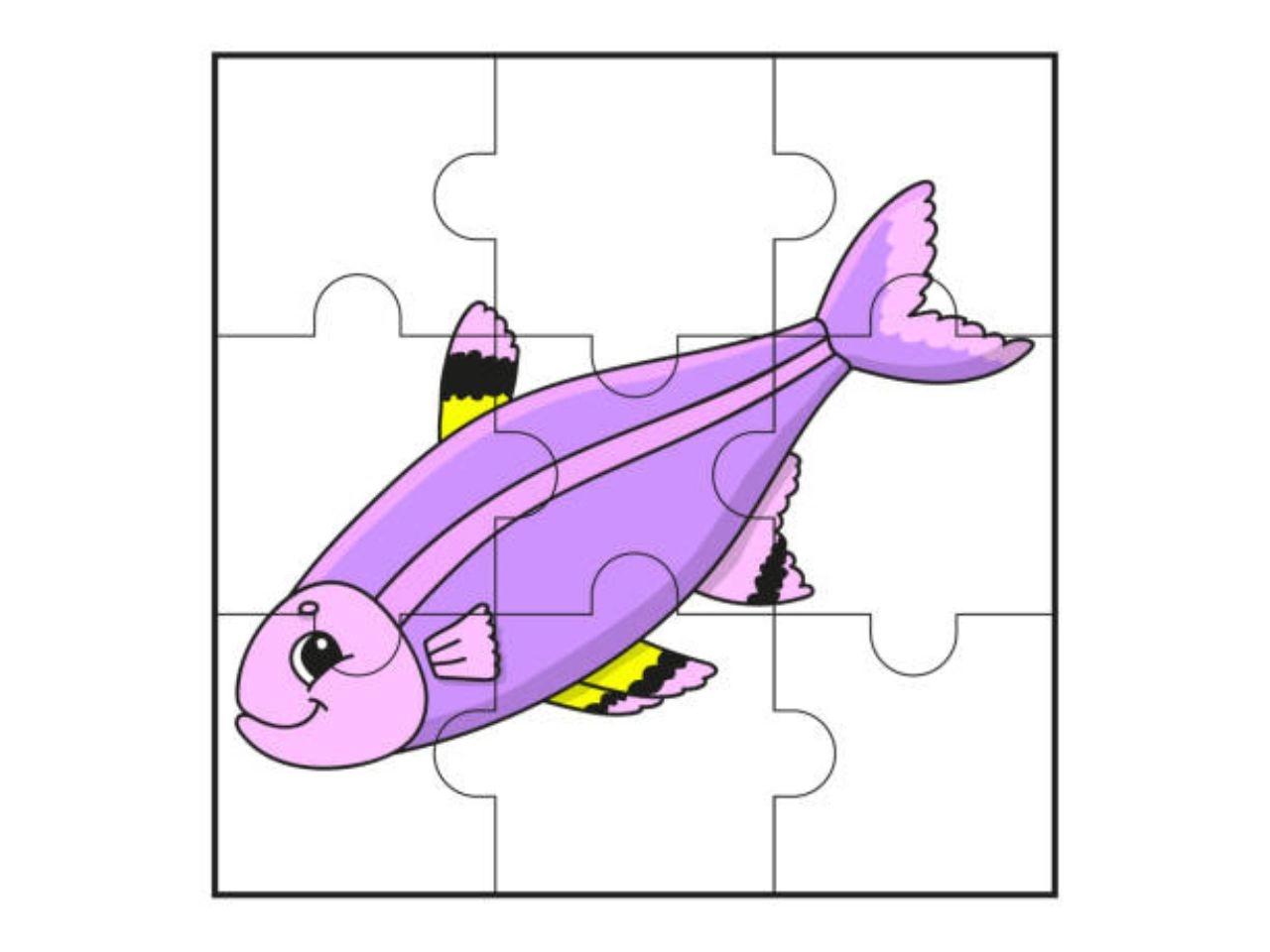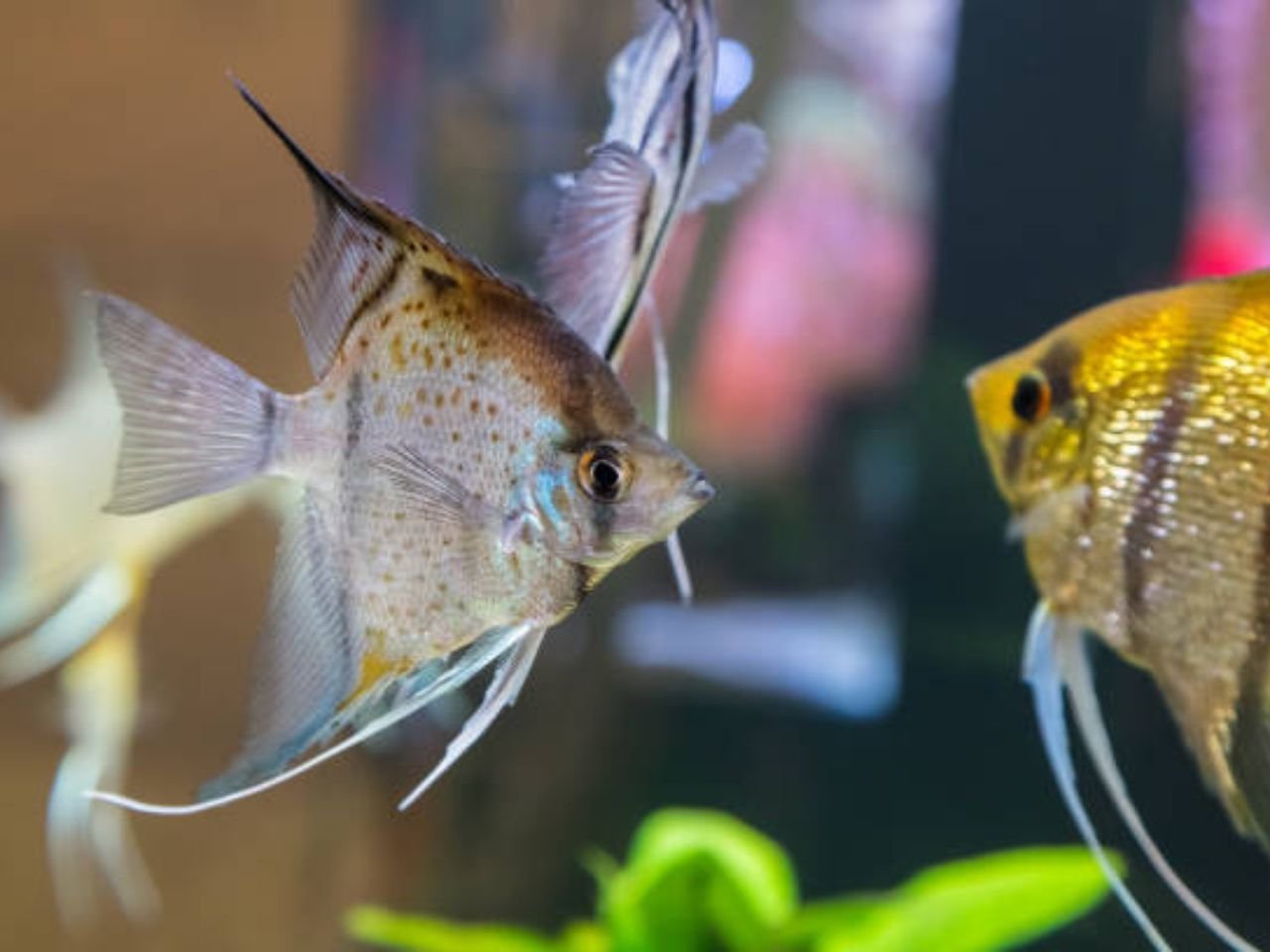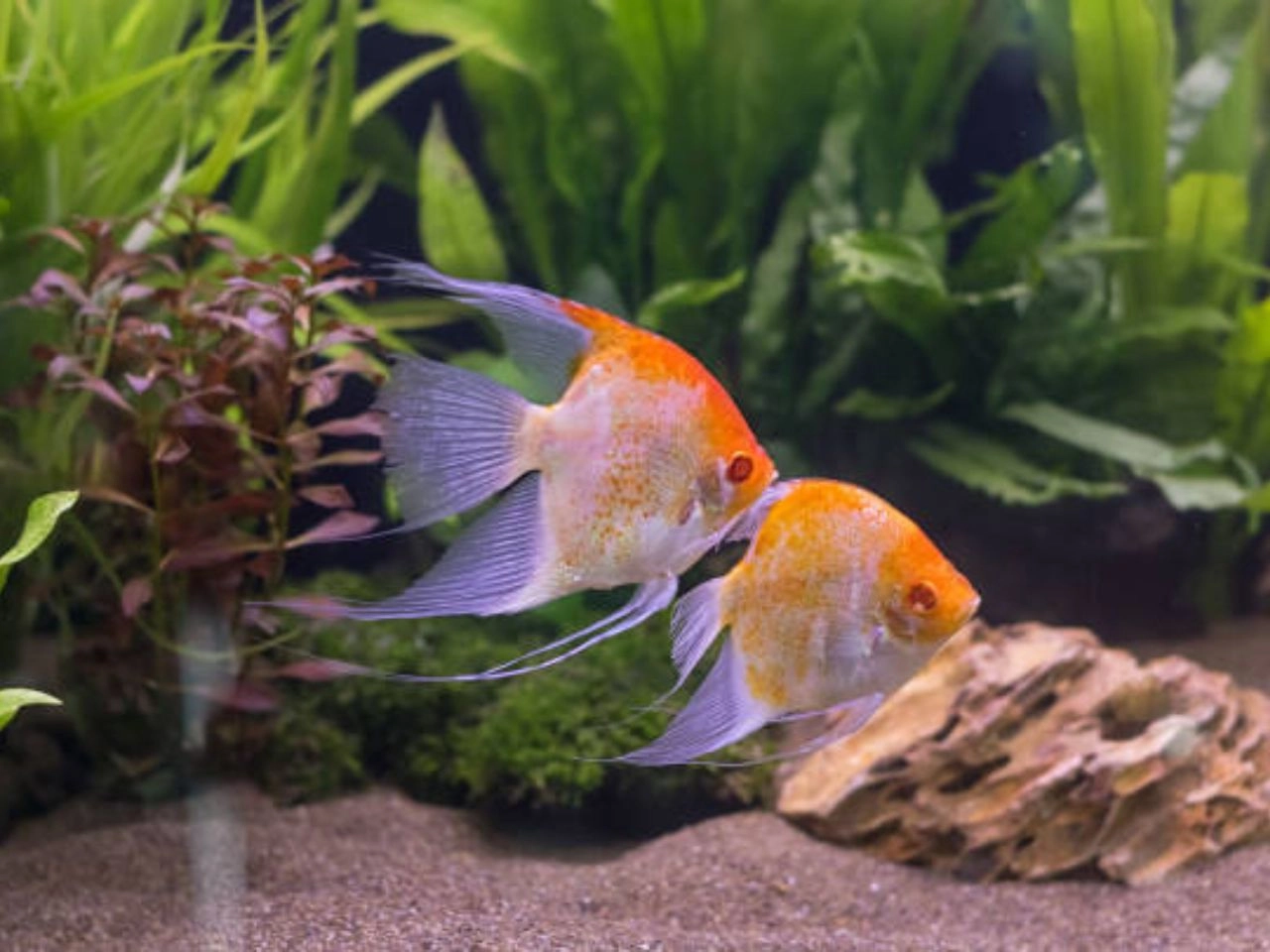Red Guppy Fish are vibrant, small freshwater fish popular among aquarium enthusiasts. They are known for their bright red coloration and easy care requirements.
Red Guppy Fish make a visually appealing addition to any aquarium. Their striking red color and active swimming behavior captivate onlookers. These fish are relatively low-maintenance, making them ideal for both beginners and experienced hobbyists. They thrive in a well-maintained tank with clean water and stable temperatures.
Red Guppies are social creatures and do well in groups, often displaying intricate social behaviors. Their diet is simple, consisting of flake food, frozen, or live food. Due to their prolific breeding, they can quickly populate a tank, providing endless fascination for fish keepers.
Red Guppy Fish Care
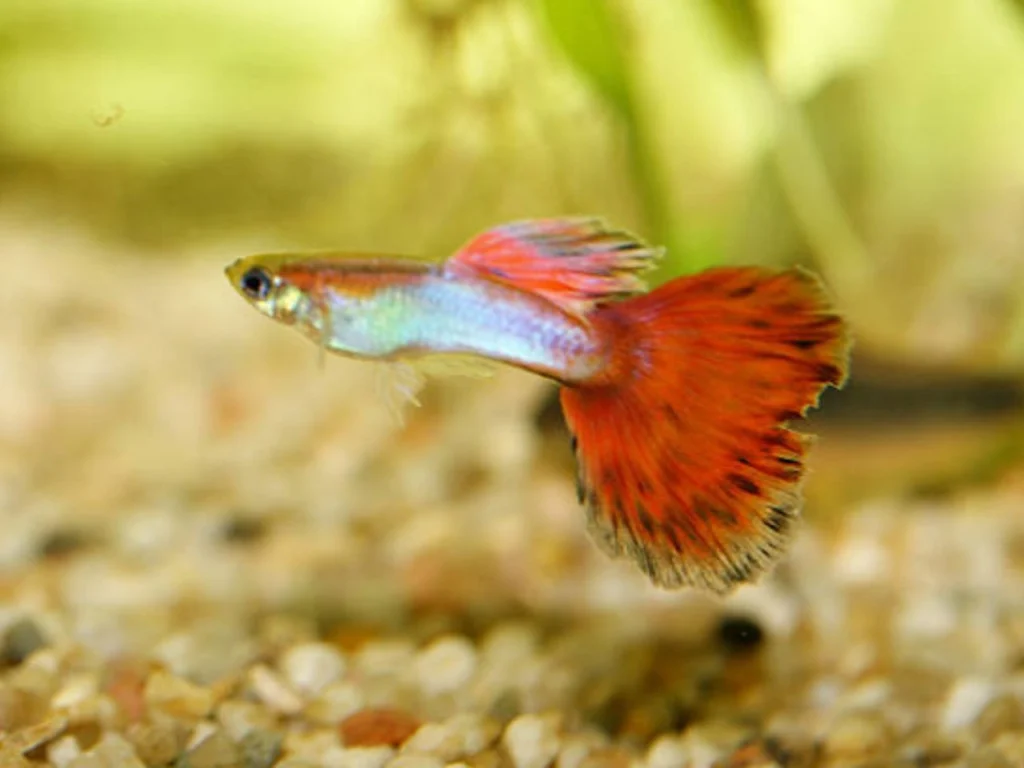
Red Guppy Fish are a popular choice for aquarium enthusiasts. They are known for their vibrant red coloration and lively behavior. These fish are easy to care for and add a splash of color to any tank.
Origins And Popularity
Red Guppy Fish originate from South America. They were first discovered in the rivers of Venezuela and Trinidad. Their bright colors and small size made them a favorite among fish keepers. Today, they are one of the most popular fish in home aquariums around the world.
Distinct Features Of Red Guppies
Red Guppies are easily identifiable by their striking red color. Their bodies are small, usually around 2 inches in length. They have fan-shaped tails that can display various patterns.
Below is a table summarizing the key features of Red Guppy Fish:
| Feature | Description |
|---|---|
| Color | Bright Red |
| Size | Up to 2 inches |
| Tail Shape | Fan-shaped |
| Origin | South America |
In addition to their beautiful color, Red Guppies are known for their friendly nature. They get along well with other fish. They are active swimmers and bring life to any aquarium.
- Easy to care for
- Friendly and social
- Brightens up any tank
Setting Up The Perfect Aquarium
Creating a beautiful habitat for your Red Guppy Fish is rewarding. A well-set aquarium ensures your fish stay healthy and happy. Below, we will guide you through the essential steps to set up the perfect aquarium for your Red Guppy Fish.
Choosing The Right Tank Size
Tank size is crucial for your guppies’ well-being. Small tanks can stress fish. A minimum of 10 gallons is recommended for a small group. Larger tanks are better as they offer more swimming space. They also make it easier to maintain water quality. Consider the number of fish you plan to keep. More fish need a bigger tank.
Essential Equipment For A Guppy Tank
Having the right equipment is essential for a healthy tank. Below is a list of must-have items:
- Filter: Keeps the water clean and free of toxins.
- Heater: Maintains a stable water temperature.
- Light: Provides a natural day-night cycle for the fish.
- Air Pump: Ensures proper oxygen levels in the water.
- Thermometer: Helps monitor the water temperature.
Here is a table summarizing the essential equipment:
| Equipment | Purpose |
|---|---|
| Filter | Keeps water clean |
| Heater | Maintains water temperature |
| Light | Provides natural light cycle |
| Air Pump | Ensures oxygen levels |
| Thermometer | Monitors water temperature |
Make sure to regularly check and maintain this equipment. This ensures a healthy environment for your guppies. Happy guppies are colorful and active!
Water Parameters For Health And Color
Red Guppy Fish are known for their vibrant colors and lively behavior. To keep them healthy and colorful, water parameters are crucial. Proper water conditions ensure their vibrant hues and overall health. Let’s explore the ideal water parameters for Red Guppy Fish.
Ideal Temperature And Ph Levels
Red Guppy Fish thrive in specific temperature and pH ranges. Maintaining these parameters is essential for their health.
| Parameter | Ideal Range |
|---|---|
| Temperature | 74-82°F (23-28°C) |
| pH Level | 6.8-7.8 |
Keep the temperature stable. Fluctuations can stress the fish. Use a reliable heater to maintain the temperature. Monitor the pH regularly with a test kit. Adjust it as needed to keep it within the ideal range.
Maintaining Water Quality
Good water quality is key to Red Guppy Fish health. Regular maintenance ensures a clean and safe environment.
- Filtration: Use a high-quality filter. It helps remove waste and toxins.
- Water Changes: Change 25% of the water weekly. This keeps the water fresh.
- Testing: Test the water weekly for ammonia, nitrites, and nitrates. Keep these levels low.
Follow a strict maintenance schedule. Clean the tank, remove debris, and check equipment. Healthy water means happy and vibrant Red Guppy Fish.
Decor And Plant Life
Creating a beautiful aquarium for your Red Guppy Fish is essential. The right decor and plant life can make your fish feel at home. It also enhances the visual appeal of your aquarium. Here, we will discuss how to choose the best substrate and decorations. We will also explore the best plants for guppy aquariums.
Choosing Substrate And Decorations
The substrate is the material at the bottom of the tank. It can be gravel, sand, or even soil. Gravel is a popular choice because it is easy to clean. Choose smooth, small-sized gravel to avoid harming your fish. Sand can also be a good option. It looks natural and is gentle on the fish.
Decorations add personality to your tank. They provide hiding spots for your guppies. They also create a stimulating environment. Use rocks, caves, and driftwood. Ensure they have no sharp edges. This prevents injuries to your fish. Decorations should be securely placed to avoid falling over.
Best Plants For Guppy Aquariums
Plants are vital for a healthy aquarium. They produce oxygen and absorb harmful chemicals. Some of the best plants for guppy tanks include:
- Anubias: These are hardy and easy to care for. They grow well in low light.
- Java Fern: This plant is perfect for beginners. It needs minimal maintenance.
- Hornwort: It grows quickly and provides good cover. Fish love hiding in it.
- Amazon Sword: This plant is larger and offers good shelter. It needs moderate light.
Plant your selections in different areas of the tank. This creates a natural look. It also offers various hiding spots for your guppies. You can use a table to organize the information:
| Plant | Light Requirement | Care Level |
|---|---|---|
| Anubias | Low | Easy |
| Java Fern | Low | Easy |
| Hornwort | Moderate | Moderate |
| Amazon Sword | Moderate | Moderate |
Adding plants and decorations not only beautifies your tank. It also ensures your guppies have a safe and happy home. Choose wisely and enjoy watching your vibrant Red Guppy Fish thrive.
Feeding Your Red Guppies
Feeding your red guppies properly is essential for their health and vibrant colors. In this section, we will explore the nutritional requirements, feeding schedule, and portion sizes for these beautiful fish.
Nutritional Requirements
Red guppies need a balanced diet to thrive. They require a mix of proteins, fats, vitamins, and minerals. You can provide these nutrients through various food types:
- Flake Food: High-quality flake food is a staple for guppies. Choose one with a high protein content.
- Frozen Food: Offer frozen brine shrimp, daphnia, or bloodworms for variety and extra nutrients.
- Vegetables: Blanched peas or spinach provide necessary fibers. Feed these occasionally.
Ensure the food is finely crushed for easy consumption by your guppies.
Feeding Schedule And Portion Sizes
Maintaining a regular feeding schedule is crucial for your red guppies’ well-being. Overfeeding can lead to health problems, while underfeeding can stunt their growth.
| Age | Feeding Frequency | Portion Size |
|---|---|---|
| Fry (0-3 months) | 3-4 times a day | Small pinch |
| Juvenile (3-6 months) | 2-3 times a day | Small pinch |
| Adult (6+ months) | 2 times a day | Small pinch |
Feed your guppies only as much as they can eat in 2 minutes. Remove any uneaten food to keep the tank clean.
Breeding Red Guppies
Breeding Red Guppies can be a fun and rewarding activity. These fish are known for their vibrant colors and ease of care. By following a few simple steps, you can successfully breed Red Guppies at home.
Creating An Optimal Breeding Environment
To breed Red Guppies, you need a suitable environment. Start with a clean and spacious tank. The ideal tank size is 10 gallons or more.
- Maintain water temperature between 74°F and 82°F.
- Keep the pH level between 6.8 and 7.8.
- Use a sponge filter to avoid harming the fry.
Include plenty of plants for hiding spots. Java moss and floating plants work well. These plants help the fry hide from adult fish.
| Parameter | Optimal Range |
|---|---|
| Temperature | 74°F – 82°F |
| pH Level | 6.8 – 7.8 |
| Tank Size | 10 gallons or more |
Caring For Fry
Once the fry are born, they need special care. Separate them from adult fish to prevent them from being eaten.
- Feed the fry high-quality food like baby brine shrimp.
- Change 20% of the water weekly to keep it clean.
- Monitor their growth and health regularly.
Providing a stress-free environment helps the fry grow strong. Keep the tank clean and free from predators.
Common Health Issues And Prevention
Red Guppy Fish are popular in home aquariums. They are vibrant and easy to care for. Yet, like all pets, they can face health issues. Knowing how to spot problems and prevent them is key.
Recognizing Signs Of Illness
Guppies can show various signs when they are sick. Look for these symptoms:
- White spots on the body or fins
- Clamped fins that stay close to the body
- Loss of color or pale appearance
- Fins that are torn or frayed
- Swimming erratically or staying at the water surface
- Refusing to eat
If you see any of these signs, act quickly. Early treatment can save your fish.
Preventative Care Strategies
Preventing illness is easier than treating it. Follow these steps to keep your Red Guppy Fish healthy:
- Maintain Clean Water: Perform regular water changes. Use a good filter to keep the water clean.
- Monitor Water Parameters: Check temperature, pH, and ammonia levels regularly.
- Provide Balanced Diet: Feed your guppies high-quality fish food. Include both flakes and live food.
- Quarantine New Fish: Isolate new fish for two weeks before adding them to the tank.
- Avoid Overcrowding: Ensure your tank has enough space. Overcrowding can stress the fish.
These steps help prevent common health issues. A healthy environment means happy guppies.
Social Behaviors And Tank Mates
Red Guppy Fish are popular in aquariums. They are easy to care for. Knowing their social behaviors is important. Choosing the right tank mates ensures harmony.
Understanding Guppy Social Structure
Guppies are social fish. They thrive in groups. Typically, they form small schools. This helps them feel safe. Guppies interact with each other often. Males show off to females. They display bright colors and fins.
Guppies also establish pecking orders. This means some are more dominant. Dominant guppies lead the group. Others follow their lead. Understanding this helps in tank management.
Compatible Species For Community Tanks
Choosing compatible species is crucial. Here are some good tank mates:
- Tetras: Peaceful and colorful
- Corydoras Catfish: Bottom dwellers, peaceful
- Platies: Similar size and temperament
- Neon Tetras: Bright and small
Here is a quick reference table:
| Species | Behavior |
|---|---|
| Tetras | Peaceful |
| Corydoras Catfish | Bottom dwellers |
| Platies | Similar size |
| Neon Tetras | Bright and small |
Avoid aggressive fish. They can stress guppies. This includes bettas and large cichlids. Keep your tank peaceful.
Tank Maintenance Routines
Maintaining a clean tank is crucial for Red Guppy Fish health. Regular care ensures your guppies thrive. This guide covers essential tank maintenance routines. Follow these steps to keep your fish happy and healthy.
Regular Cleaning Schedule
Establishing a regular cleaning schedule is vital. Clean the tank every two weeks. This prevents harmful bacteria build-up. Use a soft sponge to clean the tank glass. Avoid harsh chemicals as they can harm your fish.
Here’s a simple cleaning checklist:
- Remove algae from the glass.
- Clean decorations and artificial plants.
- Vacuum the substrate to remove debris.
- Check and clean the filter.
Water Change Techniques
Regular water changes are essential for Red Guppy Fish. Change 25% of the water weekly. This helps maintain water quality and remove toxins.
Follow these steps for a successful water change:
- Turn off all electrical equipment.
- Use a gravel vacuum to remove water and debris.
- Discard the old water.
- Fill a clean bucket with treated tap water.
- Slowly pour the new water into the tank.
- Turn on the equipment again.
Remember, consistency is key. Stick to your routine for the best results. Your Red Guppy Fish will thank you!
Enhancing Colors Naturally
Red Guppy Fish are stunning. Their colors can fade without care. Enhancing their colors naturally is key. This involves diet and lighting.
Dietary Additions For Vibrancy
Food impacts Red Guppy Fish color. Certain foods boost vibrancy. Here are some dietary additions:
- Spirulina: This algae enhances red and orange hues.
- Carotenoids: Found in carrots and red peppers.
- Brine Shrimp: Rich in protein and good for color.
- Bloodworms: Provide essential nutrients for color.
Lighting Conditions And Color Expression
Lighting affects fish color. Proper lighting enhances their natural beauty. Consider these tips:
- Full Spectrum Lighting: Mimics natural sunlight.
- LED Lights: Adjustable and energy-efficient.
- Light Duration: 8-12 hours per day is ideal.
| Lighting Type | Benefits |
|---|---|
| Full Spectrum | Enhances all colors |
| LED Lights | Customizable and bright |
| Light Duration | Maintains color balance |
Troubleshooting Common Problems
Red Guppy Fish are beautiful, but they can face some problems. Below are solutions to common issues. These tips will help you maintain a healthy tank.
Dealing With Algae Growth
Algae can be a big problem in your tank. It makes the water dirty and unhealthy. Follow these steps to control algae growth:
- Reduce the amount of light. Too much light helps algae grow.
- Clean the tank regularly. Remove any visible algae.
- Use algae-eating fish. They help keep the tank clean.
- Check water quality. Poor water quality can boost algae growth.
Managing Aggression In Guppies
Sometimes, guppies can be aggressive. This can stress other fish in the tank. Here are ways to handle aggression:
- Provide enough space. Crowded tanks cause stress and aggression.
- Add hiding spots. Plants and decorations give fish a place to hide.
- Monitor the male-to-female ratio. Too many males can lead to fights.
- Separate aggressive fish. Place them in a different tank if needed.
Following these steps will help keep your Red Guppy Fish happy and healthy.
FAQ(Red Guppy Fish Care)
What Is A Red Guppy Fish Called?
A red guppy fish is commonly called a Red Guppy or Red Delta Guppy. This vibrant fish is popular among aquarists.
What Kind Of Guppy Is Red?
Red guppies include the Red Delta, Red Moscow, and Red Tuxedo varieties. They feature vibrant red colors and unique patterns.
What Is The Rarest Guppy Color?
The rarest guppy color is the purple guppy. This unique color is highly sought after by collectors. Purple guppies are difficult to breed, making them rare.
How Big Are Full Red Guppies?
Full red guppies typically grow to around 1. 5 to 2 inches in length. They are vibrant and eye-catching.
Red Guppy Fish are a vibrant and captivating addition to any aquarium. They are easy to care for, making them perfect for beginners. Their stunning color and lively behavior bring joy to fish enthusiasts. By following proper care guidelines, you can enjoy their beauty for years.
Add red guppies to your tank today.
